Discover the Desert Birds of the Southwest
Updated: Jan. 03, 2024
You'll be amazed by the ways these desert birds survive and thrive in dry country. Learn about the unique bird species that live in southwestern deserts.
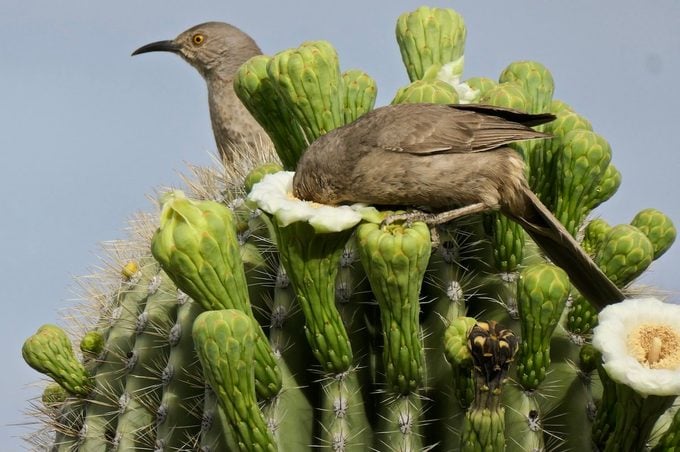
It’s chilly at dawn in the desert, even though blazing heat will arrive before midday. To the east, stark outlines of cactus and thorny trees stand against the growing light. And on all sides, the air is alive with the songs of desert birds. The deserts of the Southwest provide excellent birding. These arid lands support a rich variety of birds, including some birds that live nowhere else.
Sources of Water for Desert Birds
Although water is essential for survival, many desert birds are adapted to exist with very little of it. Black-throated sparrows, found all over the Southwest, go weeks or even months at a time without drinking any water at all. They get enough moisture from consuming seeds and insects. Where doves live in desert country, they satisfy most of their moisture needs by eating cactus fruits. But they also fly long distances mornings and evenings to visit streams, ponds or other water sources.
Some widespread birds found in other habitats also live in deserts. For example, northern cardinals are usually thought of as backyard and forest birds of the eastern states, but they live in southern Arizona, too. Because they need more water, cardinals primarily stay along rivers and streams throughout the desert. A close relative, the pyrrhuloxia—a gray and red beauty often called a desert cardinal—lives along the same streams, also moving into much dryer zones that cardinals avoid.
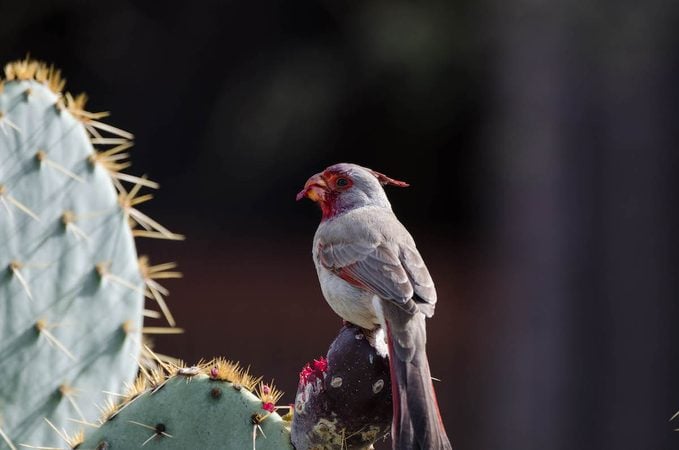
What Do Desert Birds Eat?
Food is sometimes scarce in arid country, and birds have their own ways of coping. One of the most remarkable southwestern species, the greater roadrunner, eats just about anything it can catch. Roadrunners are famous for eating snakes (even rattlesnakes!) and lizards, but they also go after insects, spiders, scorpions, mice and even small birds. While rather like birds of prey that dash around on foot, they actually belong to the cuckoo family.
Costa’s hummingbird, the only member of its family adapted to living in North American deserts, likes flower nectar just as much as its relatives do. But flowers are scarce in dry habitats, so this hummingbird moves with the seasons, migrating east and west in search of flowering plants. Another mobile bird, the glossy black phainopepla, feeds on berries, and it travels from streamside thickets in summer to clumps of mistletoe in the desert at other seasons.
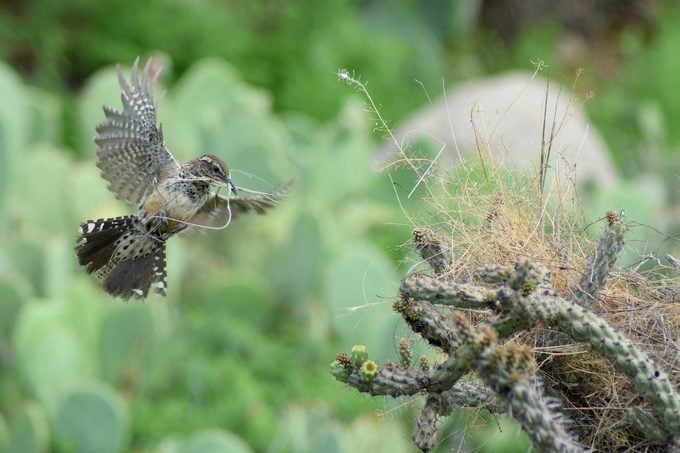
Desert Bird Nests
Birds are creative when hiding their nests in the sparse, open vegetation of the desert, One popular choice is a type of cactus called cholla, which looks like a short jumble of stout branches covered with sharp spines. Humans have a hard time even walking past a cholla without being poked. Many birds build their nests deep within the center of this cactus, and they fly in and out without getting stuck. The big boldly marked cactus wren often chooses cholla as the site for its bulky nest. And the curve-billed thrasher, a yellow-eyed bird with a sharp whit-wheet! call, also favors cholla. In Arizona, a scientist once found a large cholla cactus containing five old cactus wren nests, four old thrasher nests, and another nest still occupied by a brand-new family of thrashers.
Many desert birds place their nests on the ground or in short thorny trees like mesquites or acacias. Another drought-lover, the yucca plant, which looks like a bunch of green daggers sticking out from a central stalk, is a favorite nesting site for the colorful Scott’s oriole. The most distinctive nesting site is the saguaro, a giant cactus with upcurved arms that stands up to 60 feet tall. Woodpeckers climb the saguaro trunk as if it were a tree, and they dig holes in it for nesting cavities.
The gilded flicker and Gila woodpecker, well-adapted to desert life, usually create a new nest hole every time they’re ready to raise a family. Later, these cavities serve as nesting sites for other birds like purple martins and brown-crested flycatchers. The elf owl, the tiniest owl in the world, often lives in these holes in the largest cactuses. As darkness falls, an elf owl may sit at the entrance to its nest, making little yelping and chuckling sounds, before it flies out to hunt for its next insect meal.
Learn about 8 different kinds of bird nests and how to spot them.
How to Attract Desert Birds
In southwestern cities and towns, the best landscape plants are natives, already adapted to local conditions. People who fill their gardens with native desert plants will discover that native birds move right in. The verdin, a tiny gray sprite with a yellow head, flits through backyards throughout the dry zones. Colorful Gambel’s quail strut into suburbs and parks. White-winged doves are often more common in southwestern towns than they are out in more rural habitats. So it’s possible to do some desert birding even without a long trek into the wilderness. Whether you live in the Southwest or you’re visiting from far away, if you get a chance to explore desert country, you’ll find that these arid lands hold many treasures—including the feathered kind.
Next, learn about beach birds and beach birding locations.
12 Desert Birds You Should Know
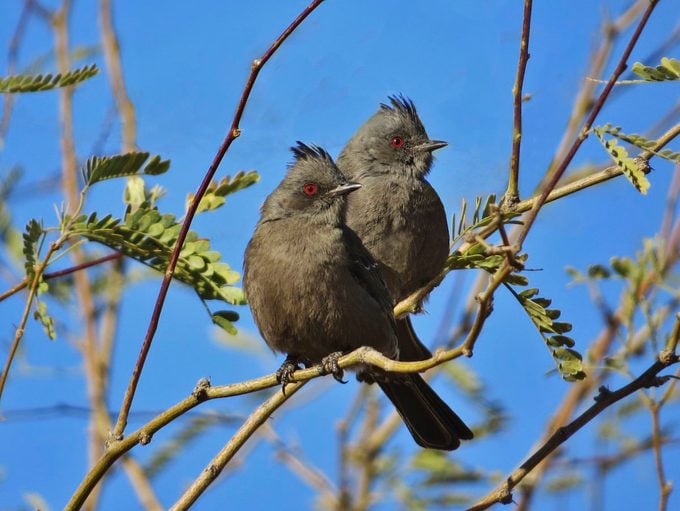
Phainopeplas
This species rarely drinks water. These unique-looking crested birds get most of the water they need to survive from eating mistletoe berries.
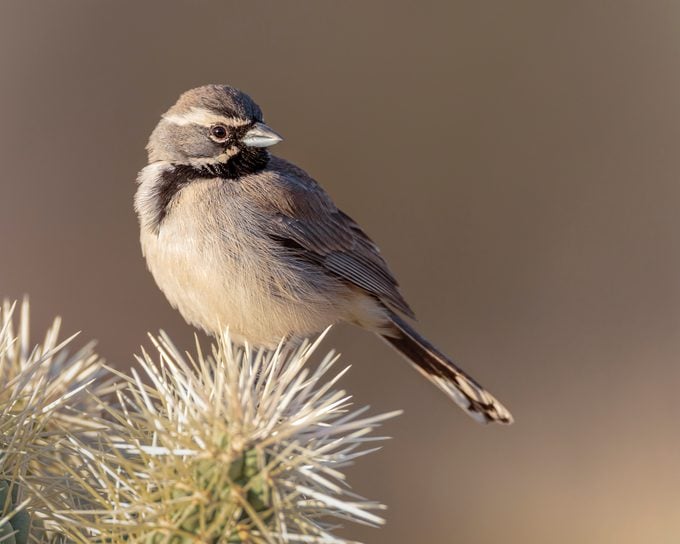
Black-Throated Sparrow
The sharply patterned black-throated sparrow is a true desert bird, often going many days without water and living long distances from a water source.
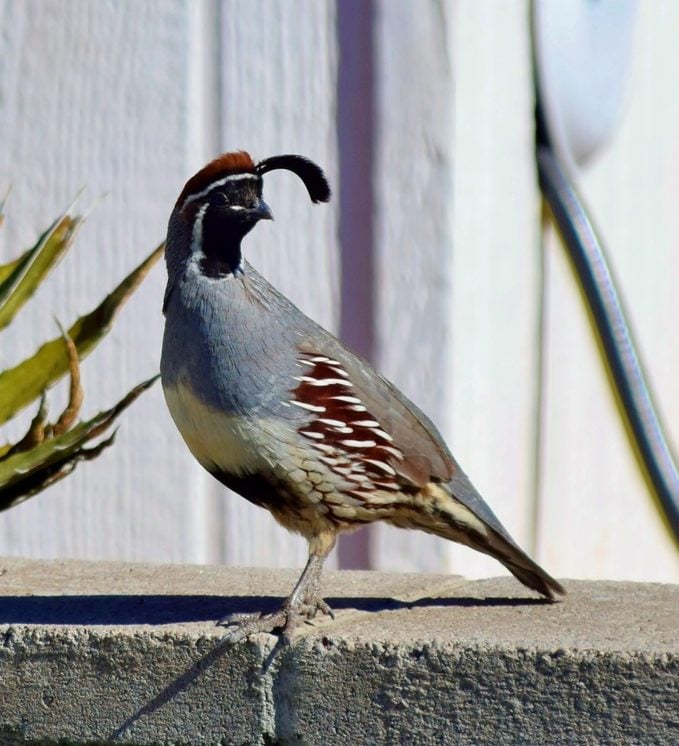
Gambel’s Quail
These birds are at home in urban and suburban areas, wandering into parks and even backyards to eat sunflower seeds, millet and cracked corn from platform or ground feeders.
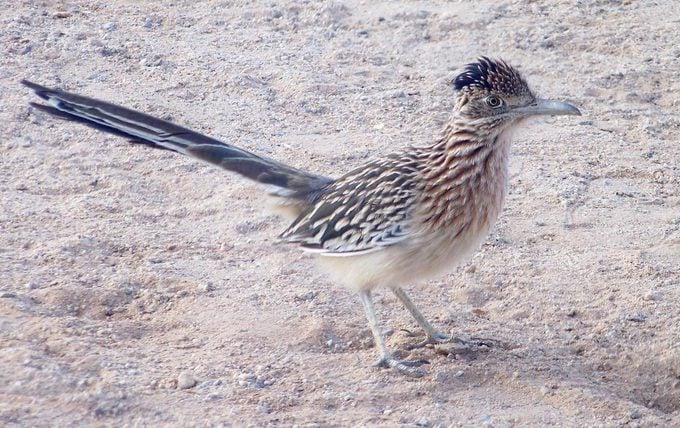
Greater Roadrunner
Roadrunners are not picky eaters. Almost anything they catch in the desert, including rattlesnakes, may become dinner.
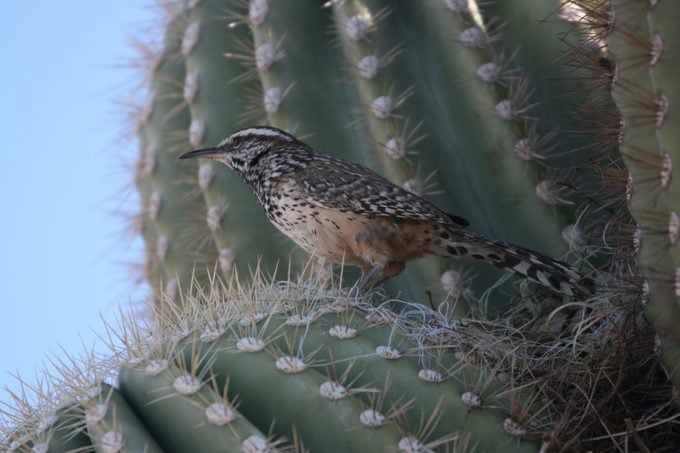
Curve-Billed Thrasher and Cactus Wren
Both the curve-billed thrasher and cactus wren are skilled at slipping through the sharp spines of cactus thickets, choosing to build nests and raise their young there.
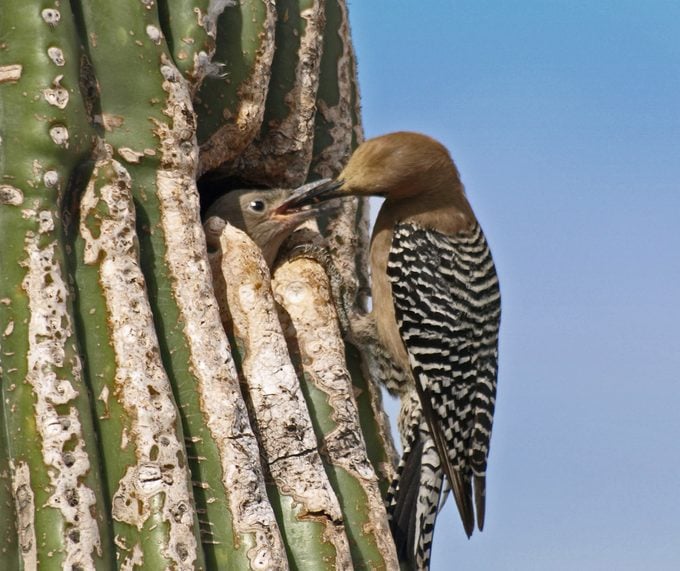
Gila Woodpecker
This noisy desert bird draws attention as it excavates tree trunks and saguaro cactuses for nesting cavities. They’re sometimes spotted at hummingbird feeders, but Gilas primarily forage for fruit and insects, gleaning them from cactuses, trees and other plants.
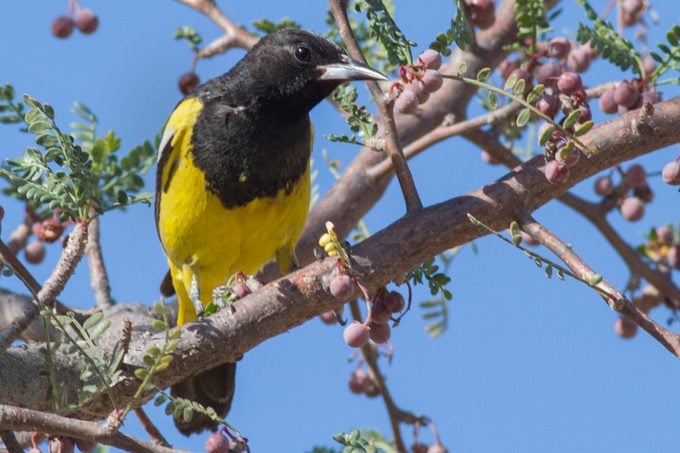
Scott’s Oriole
Scott’s orioles are found from eastern California and northern Utah to the Hill Country of central Texas. They’re especially drawn to areas with lots of yucca plants, building their nests among the long, daggerlike yucca leaves.
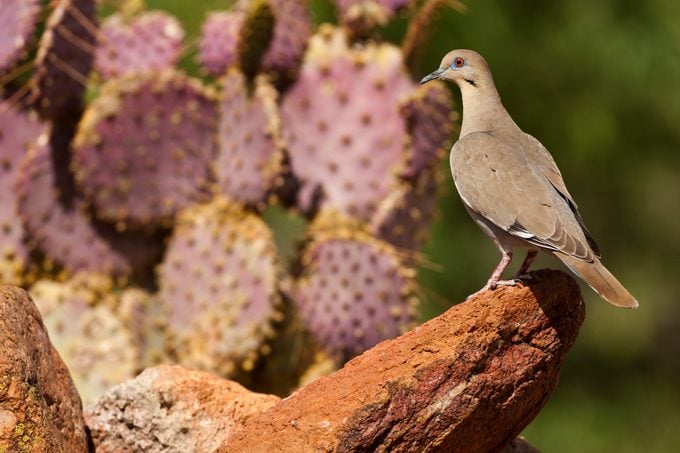
White-Winged Dove
Mourning doves are sometimes confused with white-winged doves. You can tell white-winged doves apart by their namesake white wing stripe.
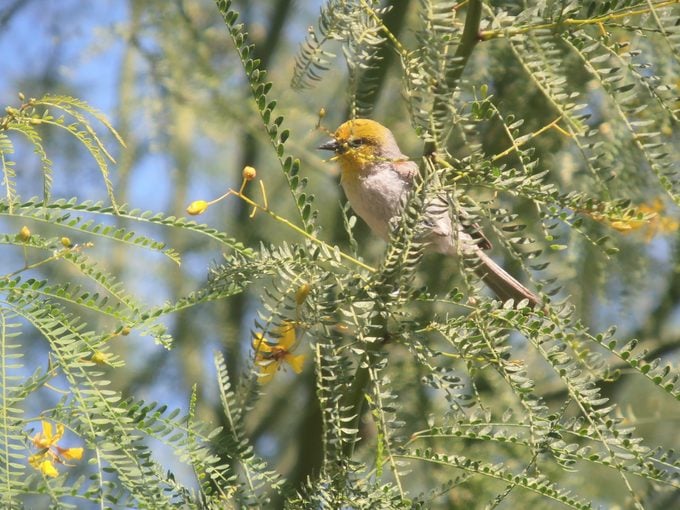
Verdin
This resident of the desert Southwest likes open habitats, and it will readily come into yards that have a few native trees and shrubs such as mesquites, acacias or palo verdes. It feeds mostly on insects, so it’s not attracted to birdseed. But it also likes nectar, so a garden with native flowering plants may draw it in. The verdin is also a frequent visitor to hummingbird feeders.
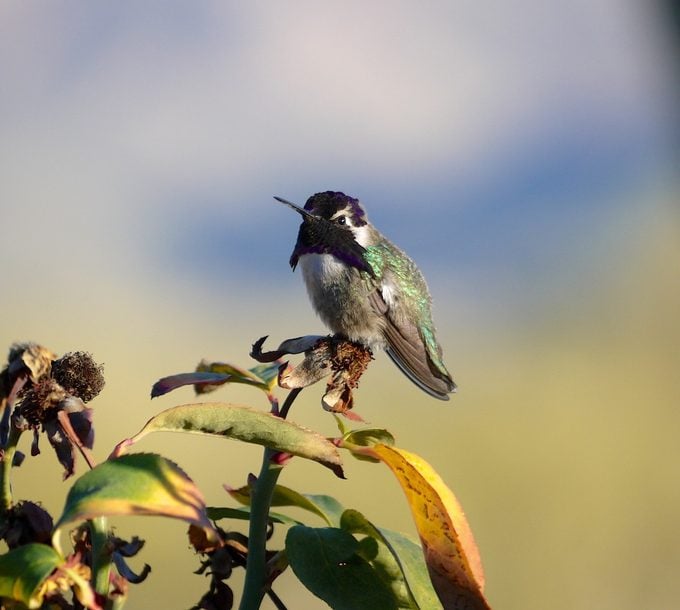
Costa’s Hummingbird
You’ll only find these hummingbirds in the deserts of the southwest. The males are known for their vibrant purple face and throat feathers and songs, which sound like a thin piercing whistle.
4 North American Deserts to Explore
North America’s major deserts are all very dry regions, but they’re defined partly by when it rains.
Chihuahuan Desert
Covering large areas of western Texas and New Mexico, rain falls mainly in summer here, which supports a sparse growth of grass, small bushes and scattered cactus.
The Mohave Desert
In southeastern California and neighboring states, rain falls occasionally in winter.
Great Basin Desert
Centered on Utah, this sagebrush country gets most of its precipitation in the form of winter snow.
Sonoran Desert
Summer and winter are considered rainy seasons, which means this southern Arizona desert supports the most plant life, with a wide variety of cactus, shrubs and short trees.
Next, check out the most commonly sighted bird in every state.




















